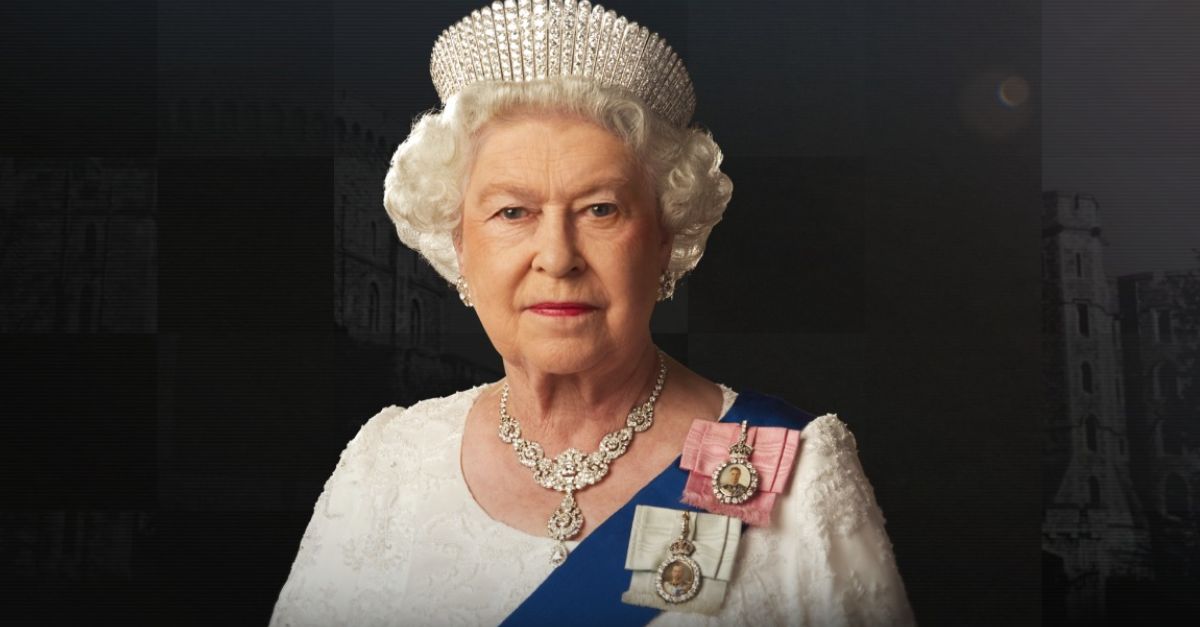Palaces, Cottages, And Everything Between
Over centuries, the royal family settled into dozens of homes. Grand halls, quiet lodges, city corners. Some of these residences still hold royal footsteps. Others don’t. But each one left its mark.

Buckingham Palace
Think grandeur? Buckingham delivers it in gold-plated droves. You’re staring at 775 rooms—including a throne room and ballroom—plus the famous balcony scene where royals used to greet crowds. Queen Victoria moved in back in 1837. Want a summer tour? They open staterooms for you but just mind the corgis.
Windsor Castle
Serving royalty for nearly 1,000 years, Windsor isn’t only the largest occupied castle worldwide but also the longest continually inhabited one. Charles III holds Easter Court here, and the St George’s Chapel inside is where Prince Harry wed Meghan Markle. Windsor’s walls echo with medieval pomp and modern memory.
 https://www.wyrdlight.com Author: Antony McCallum, Wikimedia Commons
https://www.wyrdlight.com Author: Antony McCallum, Wikimedia Commons
Palace Of Holyroodhouse
Step into Scotland’s drama at Holyrood. Mary, Queen of Scots, lived here, and her scandal-ridden murder tale still haunts the Queen’s Bedchamber. Located at Edinburgh’s Royal Mile end, this palace plays host to King Charles every summer during Holyrood Week. Royal flags fly, and pipes proudly blare.
 Mattias Hill, Wikimedia Commons
Mattias Hill, Wikimedia Commons
Hillsborough Castle
Despite its name, Hillsborough Castle is more Georgian manor than a medieval fortress. Built in Northern Ireland, it’s the go-to stop for royal visits. Ever heard of the Good Friday Agreement? Key talks happened here. Today, stroll the gardens, then grab tea like a Lord; no title needed.
 Slowtech2000, Wikimedia Commons
Slowtech2000, Wikimedia Commons
Clarence House
Clarence House hides in plain sight next to St James’s Palace. King Charles lived here for decades before ascending the throne. Built for the Duke of Clarence in 1825, this cream-colored townhouse whispers understated luxury. Inside? Think chintz, antiques, and portraits with serious pedigree.
Kensington Palace
Kensington has been around since Queen Victoria’s time. Literally. She was born and raised here. Today, it hosts several royal households, including William and Kate’s close family. Want intrigue? Princess Diana called it home, too. Outside, the Sunken Garden blooms in her memory every spring.
 Colin Smith, Wikimedia Commons
Colin Smith, Wikimedia Commons
St James’s Palace
Formal but fierce, St James’s Palace remains the senior royal palace. Ambassadors still present credentials here, even if the monarch no longer lives within. Built by Henry VIII in 1530, it has survived fire, war, and scandal. Psst—Princess Anne still maintains an office inside these hallowed halls.
 camerawalker, Wikimedia Commons
camerawalker, Wikimedia Commons
Bagshot Park
Far enough from London’s buzz, Bagshot Park lets the Duke of Edinburgh breathe. This neo-Tudor mansion sprawls across 51 acres in Surrey. Once Queen Victoria’s son’s bachelor pad, it’s now privately leased. Ever wonder where royalty unwinds with dogs and garden boots? Here’s your answer.
 Phillip Williams, Wikimedia Commons
Phillip Williams, Wikimedia Commons
Wren House
Small, private, and easy to miss, Wren House sits quietly on the Kensington grounds. As Princess Alexandra’s cozy home for years, it lacked the spectacle of palaces but scored on charm. With its mellow red brick and quiet vibes, it whispers “home” louder than it shouts “royal”.
 MrsEllacott, Wikimedia Commons
MrsEllacott, Wikimedia Commons
Sandringham House
Christmas with the Windsors happens here. Sandringham, privately owned since 1862, is where tradition meets downtime. Queen Elizabeth loved walking her dogs on the estate’s 20,000 acres. The late Prince Philip called it “heavenly peace”. Your royal holiday dreams? They’re likely styled after this Norfolk gem.
Balmoral Castle
Purchased by Prince Albert in 1852, Balmoral quickly became Queen Victoria’s Highland haven. Nestled in Aberdeenshire, it’s where the royals fish, hunt, and picnic away from the public gaze. Queen Elizabeth II adored it, and it’s where she passed in 2022. Balmoral’s is adorable, offering both privacy and pine forests.
 Stuart Yeates from Oxford, UK, Wikimedia Commons
Stuart Yeates from Oxford, UK, Wikimedia Commons
Highgrove House
Highgrove doesn’t scream royalty—it gardens it. Located in Gloucestershire, this Georgian home is Charles III’s eco-sanctuary. He transformed its grounds into a masterclass in organic horticulture, and if you fancy a tipple, try the Highgrove gin made with herbs grown just outside his sitting room. Yes, really—it’s regal and refreshing.
 Robin Webster, Wikimedia Commons
Robin Webster, Wikimedia Commons
Birkhall
Set on the Balmoral Estate, Birkhall exudes Highland romance. Prince Charles inherited it from the Queen Mother, and it lovingly exudes a place for quiet thought. Wildlife roam the grounds freely, while tartan and taxidermy dress the interiors. Ever dreamed of royal seclusion? Birkhall’s your spirit spot.
 Stanley Howe, Wikimedia Commons
Stanley Howe, Wikimedia Commons
Llwynywermod
Wales has its royal retreat, too. Llwynywermod, near Llandovery, is where Charles plants his flag when in the Welsh countryside. Once a coach house ruin, now it’s been artfully restored using sustainable Welsh oak and slate. Want real rural vibes? The sheep here don’t recognize your titles.
 John Duckfield, Wikimedia Commons
John Duckfield, Wikimedia Commons
Dumfries House
Saved from auction in 2007, Dumfries House became Charles’s passion project. You’ll find this home in Ayrshire; it’s an 18th-century jewel with original Chippendale furniture. Now, it hosts education programs and events under The Prince’s Foundation. This house works harder than many palaces ever did.
 Humphrey Bolton, Wikimedia Commons
Humphrey Bolton, Wikimedia Commons
Tamarisk House
Resting on the Isles of Scilly, Tamarisk offers island serenity in spades. The modest cottage, surrounded by fragrant tamarisk trees, once hosted Prince Charles during visits. It’s leased out these days, but step on the pebbled path, and you’re following literal royal footsteps to the sea.
Eltham Palace
Imagine an Art Deco dream stitched into medieval ruins. That’s Eltham Palace for you. Childhood home to Henry VIII, it later got a 1930s makeover by the wealthy Courtaulds. Now managed by English Heritage, it mixes moats with modernity. Swanky and storied—Eltham never plays by palace rules.
 Tom Parnell from Dunfermline, Scotland, Wikimedia Commons
Tom Parnell from Dunfermline, Scotland, Wikimedia Commons
Hampton Court Palace
Step into the court of Henry VIII, minus the beheadings. Hampton Court blends Tudor drama with baroque brilliance. Think ghost sightings, the world’s oldest hedge maze, and a kitchen built for feasts that fed 600. Visiting? The chapel’s ceiling alone might make you gasp. Or genuflect.
 Derek Bennett, Wikimedia Commons
Derek Bennett, Wikimedia Commons
Kew Palace
You’ll find Kew Palace hidden inside Kew Gardens—a sweet surprise. The smallest of the royal residences, it once housed the “mad” King George III during his illness. Its red-brick exterior masks a surprisingly intimate space. When you take a closer look, you’re walking through chapters of royal vulnerability and recovery.
 Ethan Doyle White, Wikimedia Commons
Ethan Doyle White, Wikimedia Commons
Richmond Palace
Now mostly gone, Richmond Palace still whispers through its surviving gatehouse. Henry VII loved it here, and Elizabeth I breathed her last within these walls. Located along the Thames, it once rivaled Hampton Court in splendor. Today, private flats stand where monarchs once ruled.
Greenwich Palace (Palace Of Placentia)
Once the riverside jewel of the Tudors, Greenwich Palace welcomed the births of Henry VIII, Mary I, and Elizabeth I. Originally acquired by Margaret of Anjou, it was later rebuilt for Charles II in 1664 as the King Charles Wing. Today, where monarchs once strolled, the Old Royal Naval College stands.
 Internet Archive Book Images, Wikimedia Commons
Internet Archive Book Images, Wikimedia Commons
Nonsuch Palace
Nothing matched Nonsuch—hence the name. Built by Henry VIII to outshine Europe’s palaces, it had black and white stucco panels and dazzling Renaissance art. Tragically, it vanished by 1682 when Charles II’s mistress dismantled it for debts. Want a royal riddle? Try locating its buried remains.
 Martin Hesketh from London, UK, Wikimedia Commons
Martin Hesketh from London, UK, Wikimedia Commons
Whitehall Palace
Before Buckingham, there was Whitehall, London’s crown jewel. Once Europe’s largest palace, it housed over 1,500 rooms and was the site of Henry VIII’s marriage to Anne Boleyn. Fire devoured most of it in 1698, but the Banqueting House remains. The Rubens ceiling still wows even the least artistic eyes.
 en:User:ChrisO, Wikimedia Commons
en:User:ChrisO, Wikimedia Commons
Frogmore House
Queen Charlotte loved it for its privacy; Meghan and Harry shot their wedding portraits here simply because this Windsor retreat oozes Georgian grace. It’s surrounded by royal tombs, tranquil lakes, and flower beds that practically hum lullabies. If you want peace, this place breathes it.
Royal Lodge
Huddled in Windsor Great Park, Royal Lodge has long played home to Prince Andrew. Queen Elizabeth The Queen Mother lived here for decades, tending her roses and sipping gin. Though not publicly open, its thatched tea house and woodland surroundings make it one of Windsor’s best-kept secrets.
Thatched House Lodge
Richmond Park hides this thatched treasure, currently home to Princess Alexandra. With origins dating back to the 17th century, it blends cottage charm with royal elegance. Churchill once rented it, too! Few know it exists, and maybe that’s the point. It’s as private as royalty can realistically get.
 Robert Smith, Wikimedia Commons
Robert Smith, Wikimedia Commons
Marlborough House
Once the Duchess of Marlborough’s palace, this grand London residence now serves the Commonwealth. Sitting beside St James’s, it hosted royal receptions for generations. Queen Mary lived here until 1953. When you think Marlborough, think chandeliers, grand staircases, and diplomatic handshakes.
 David Purchase, Wikimedia Commons
David Purchase, Wikimedia Commons
Lancaster House
Step inside Lancaster House and feel the weight of the empire. Just a whisper from Buckingham Palace, this Neoclassical gem has hosted royal banquets and world leaders. Margaret Thatcher launched her memoirs here. Film buffs? It stood in for Buckingham in The Crown and The King’s Speech.
 Financial Times, Wikimedia Commons
Financial Times, Wikimedia Commons
York House
Part of the St James’s Palace complex, York House has seen many names and noble tenants. It’s used for royal offices now but once housed Prince Edward before his 1936 abdication. While the public can’t enter, it remains a working hive of royal administration, fit for behind-the-scenes royalty.
 SpeedyCheetah66, Wikimedia Commons
SpeedyCheetah66, Wikimedia Commons
Adelaide Cottage
Hidden within Windsor Home Park, Adelaide Cottage combines 1830s romance with modern royal life. Prince William and his family moved in for its privacy and proximity to Queen Elizabeth. Fun fact—its master bedroom once held a gilded dolphin ceiling from a royal yacht. Nautical flair in a forest retreat.
Ivy Cottage
Huddling on the Kensington Palace grounds, Ivy Cottage became Princess Eugenie’s cozy corner. Don’t expect towering gates or sweeping staircases because this residence leans quaint over grand. It’s a stone’s throw from Apartment 1A, offering family closeness without the paparazzi glare. Ivy Cottage is definitely a modern royal’s low-key London nest.
 Steve Cadman, Wikimedia Commons
Steve Cadman, Wikimedia Commons
Nottingham Cottage
Affectionately dubbed “Nott Cott,” this modest home hosted Prince Harry and Markle when they were still engaged. It’s part of Kensington’s estate but lacks palatial size. The low ceilings and simple charm make it ideal for newlyweds. Want a royal love story origin spot? This is your romantic breadcrumb.
Fort Belvedere
Looking for a royal scandal? Fort Belvedere dishes it. This Gothic Revival gem in Windsor housed King Edward VIII during his infamous romance with Wallis Simpson. It’s even where he signed his 1936 abdication papers. Though now privately owned, its silhouette still peeks over the trees like a royal ghost.
Craigowan Lodge
Rustic and remote, Craigowan Lodge lies just a mile from Balmoral but feels a world away. Queen Elizabeth often used it during the quiet weeks before Balmoral’s staff arrived. It is characterized by thick stone walls, tartan interiors, and stags in the mist, the Highlands at their most classically royal.
Osborne House
Osborne House, built in 1845 for Queen Victoria and Prince Albert, is modeled after an Isle of Wight Italian house. Albert was mostly responsible for its design. You can still explore Queen Victoria's bedroom, where she passed away in 1901.
Carisbrooke Castle
Carisbrooke wasn’t built for luxury—it was a fortress first. Prior to his execution, King Charles I was held captive here. Situated on the Isle of Wight, it features a well house driven by a donkey and thick medieval fortifications. Royals still visit, but it’s history—not comfort—that steals the show here.
Ravenscourt Park House
While not a current royal home, Ravenscourt Park House has flirted with aristocratic connections. Once part of a grand estate in West London, it hosted several royally adjacent families. The surrounding parkland now offers city dwellers a regal slice of greenery and a whisper of its posh past.
Audley End House
Audley End once rivaled royal palaces in size—King James I practically used it as his own. Located in Essex, it had 100 rooms until budget cuts (and time) trimmed it down. Though not in royal hands now, its grandeur whispers back to when kings called it a “house”.
 Balon Greyjoy, Wikimedia Commons
Balon Greyjoy, Wikimedia Commons
Tower Of London
This one’s got layers with a fortress, prison, palace, zoo, and treasury. Monarchs lived here until the Tudors shifted focus elsewhere. It held Anne Boleyn before her beheading, safeguarded the Crown Jewels, and even housed polar bears. If you are visiting, look for the ravens; they’re said to protect the kingdom.
 Bernard Gagnon, Wikimedia Commons
Bernard Gagnon, Wikimedia Commons
Gloucester House
History hung thick in the air at Gloucester House. Prince William, Duke of Gloucester, drew his last breath here in 1805. Decades later, Princess Mary—George III’s final surviving child—also passed here in 1857. Though it’s faded from royal use, the walls once held whispers of legacy and loss.
Anmer Hall
Resting within the Sandringham Estate, Anmer Hall blends countryside calm with royal prestige. Queen Elizabeth II gifted it to William and Kate after their 2011 wedding. Renovated into a modern family haven, it’s where the couple retreated during lockdown, raising their children amid Norfolk fields and pheasants, far from palace flash.
 Richard Humphrey, Wikimedia Commons
Richard Humphrey, Wikimedia Commons
Gatcombe Park
Set between Minchinhampton and Avening, Gatcombe Park isn’t just Princess Anne’s retreat; it’s a working estate with equestrian flair. Initially built in the 1770s, economist David Ricardo rebuilt it in 1820. Today? It hosts horse trials and craft fairs. A royal residence meets rustic charm without losing its stately edge.
 john shortland, Wikimedia Commons
john shortland, Wikimedia Commons
145 Piccadilly
Before Buckingham, young Princess Elizabeth called 145 Piccadilly home. This Mayfair townhouse buzzed with childhood laughter from 1926 to 1936. Tragically, it suffered heavy bomb damage during WWII and was demolished in 1959. Still, it remains etched in memory as the royal family’s prewar London heart.
 Ministry of Information Photo Division Photographer, Wikimedia Commons
Ministry of Information Photo Division Photographer, Wikimedia Commons
Bentley Priory
Bentley Priory has lived many lives—from a medieval monastic site to Queen Adelaide’s final home. Sir John Soane’s 18th-century redesign turned it into a stately mansion. During WWII, it directed RAF Fighter Command’s Battle of Britain efforts. Currently, it splits its legacy: the museum of valor and luxury living.
 David Marsden, Wikimedia Commons
David Marsden, Wikimedia Commons






















